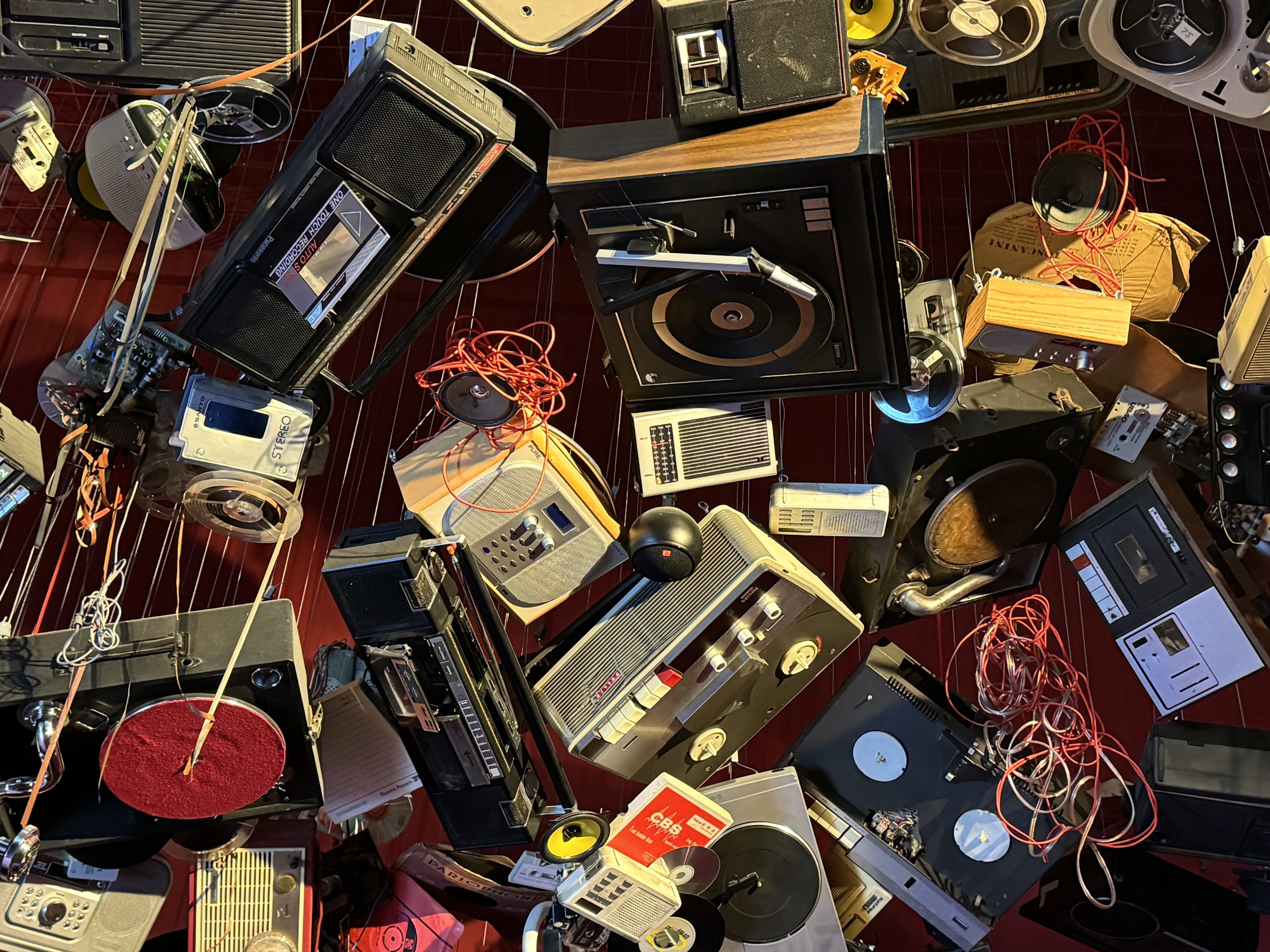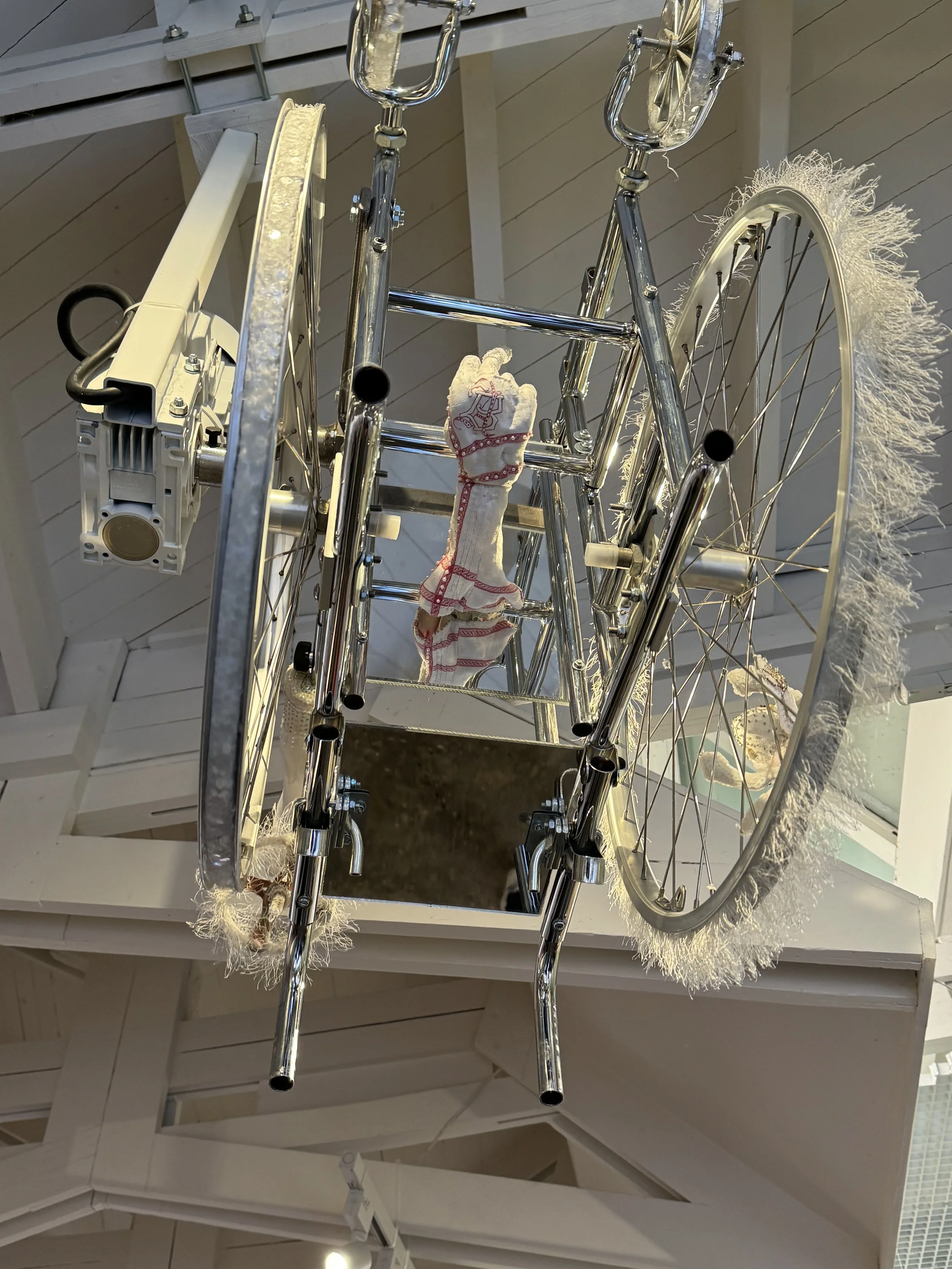Venice Biennale 2024
This art installation was suspended from the ceiling in the British Pavilion.
Every two years the city of Venice hosts Venezia Biennale Arte, an international art and architecture exhibit. The 2024 Biennale, curated by Adriano Pedrosa of Brazil, marks the 60th edition of the show. This year’s exhibit, with more than 300 participating artists from 88 countries, opened in April and continues through November 24th.
The Biennale takes place mostly at the far end of Venice, at the Arsenale (where all of the large naval ships are anchored) and in the pavilions of the Arsenale Gardens. Additional works can be found throughout the city of Venice. The Arsenale Gardens is home to the permanent pavilion of the larger national exhibits. It’s easy to spend hours here, wandering through the exhibits, stopping at one of several cafes, and enjoying the grounds as well as the outdoor art pieces.
The 2024 show’s title is Stranieri Ovunque – Foreigners Everywhere. An explanation of the theme in the exhibit’s literature reflects the idea that we are all, at some level, a stranger.
In keeping with the theme, many of the works are by “outsiders”, including artists who have been treated as foreigners in their own lands or cultures. The foreignness relates to concepts such as indigenous status, sexual orientation or identity, political beliefs, colonization of lands by foreign powers, or immigration status. This theme was especially evident in Spain’s Pavilion which included a Migrant Art Gallery and a Migrant Garden.
A number of the works are political in nature. Others portray themes of environmental sustainability, history, migration patterns, and culture. Italian culture and history was represented in several pieces in the Central Pavilion. The one below, titled The Cutting and Sewing School, was particularly captivating. It seemed to show the old ways slowly fading away.
Italy, The Cutting and Sewing School
Belgium, Petticoat Government
The art was fascinating, at times confusing, other times enchanting. Some pieces were uncomfortable or downright disturbing. All were thought-provoking – and isn’t that just what art is meant to be?
At a certain point I realized that it was impossible to read all of the accompanying descriptions, much less take notes, and still see as many of the pavilions as possible. For that reason, in this post, I have included photos identified mostly by the name of the country’s pavilion without detailed explanations of the works and with apologies to the unnamed artists.
I leave the interpretations of each work up to you!
Canada. The background is made up of strands of glass beads. This light and airy room was a great place to linger.
While some of the darker and more disturbing images gave me much to consider, it was the ones that reflected shared history, hope, unique ways of living, and light that most grabbed me.
I spent a long time looking at one captivating piece entitled The Crucifixion of the Soul, by Madge Gill (below).
The work was a 10 meters (~32 feet) long ink on fabric drawing made up of a series of female faces and intricate backgrounds. All crafted from tiny lines in 4 colors of ink. Her work was so unique that I had to know her story.
I was surprised to learn that she was not a contemporary artist but rather that she lived from from 1882 to 1961. She is considered an “outsider artist” - one who is self-taught and has persisted in their art despite poverty or mental illness. Madge Gill was indeed a stranger in her own world, and a perfect representation of the Biennale theme.
80+ countries participated in this year’s Biennale. I particularly loved the US one, which was filled with works reflecting Native American culture. It was the first time that a Native American Artist (Jeffrey Gibson) was chosen to represent the United States at the Biennale.
The forms, colors, and beadwork were nothing short of spectacular.
My many years of living in New Mexico made these pieces especially meaningful to me. I wasn’t alone in my delight in this exhibit - the number of people spending time in this pavilion and taking photos made it clear that these pieces were appreciated by many.
Moving through France’s pavilion was to take an undersea journey, a reminder of the importance of our oceans and the life within them.
A few of my other favorites:
Finland - The Pleasures We Choose
Hungary, Techno Zen. A multimedia installation with sound, light, movement, and a riot of color (below).
This was my first ever experience at the Biennale. With just one day in Venice, I was able to see many of the exhibits in the Arsenale Garden but ran out of time for the ones in the other Arsenale and city locations. When the Biennale returns in 2026, I will need to plan two full days!


























